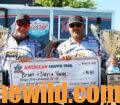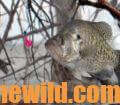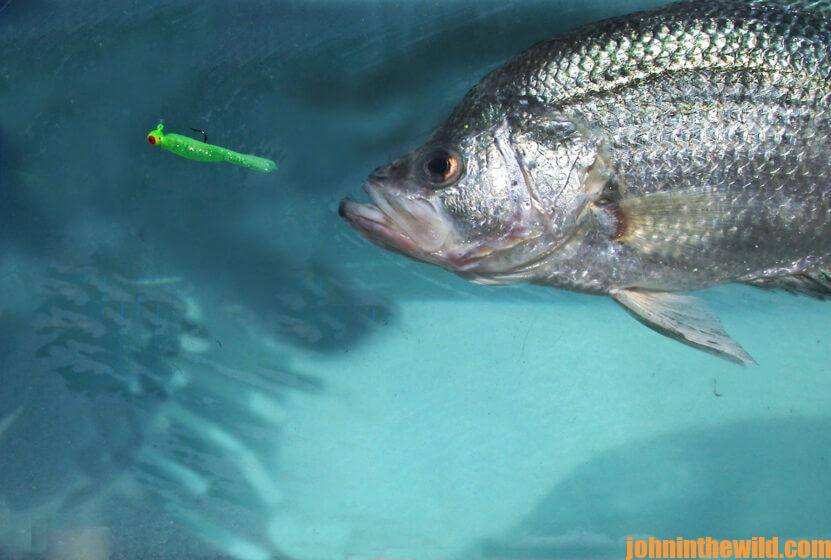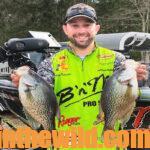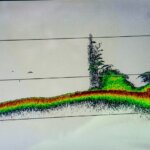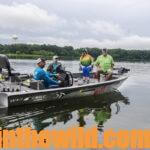Editor’s Note: Jordan Newsome of Iron Station, North Carolina, has crappie tournament fished for eight years but has been crappie fishing since he was a child. He fishes the Crappie USA Tournament Circuit (https://www.crappieusa.com/), the Central Carolina Crappie Trail (https://www.crappie.com/crappie/north-carolina/423350-central-carolina-crappie-trail), the Yadkin River Crappie Trail (https://www.facebook.com/yadkinrivercrappietrail) and the Fish the Carolinas Crappie Trail (https://www.fishthecarolinas.org/). Newsome has become an expert on using the latest technology – the Garmin LiveScope – to catch crappie.
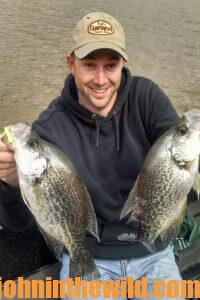 John E. Phillips: Tell us about the rod, reel, line and lure you use to catch these big crappie.
John E. Phillips: Tell us about the rod, reel, line and lure you use to catch these big crappie.
Jordan Newsome: I don’t think the spinning reel that I use is critically important, but I like fishing a 2000 Series Spinning Reel. However, I do think my rod is critically important to my success, and I use two different rods. I like a 6’6” B‘n’M TCB rod, and an 11’ B‘n’M BGJP (Buck’s Graphite Jig Pole) (https://www.bnmpoles.com/). The first rod has a length and size that allows me to cast a very-light jig a long distance. If I’m fishing 30-50 feet to get my jig in front of a crappie, this 6’6” rod will be my rod of choice. I’ll cast that distance if I’m fishing in clear water or any time the crappie seem to be a little “spooky.” When I’m fishing clear water, I prefer 4-pound-test Izod fluorocarbon line that allows me to cast long distances with a light jig and causes the jig to fall slowly. When I’m fishing in clear water, I prefer to set the drag on my reel at 4-pound test, but some people will fish 6- or even 8-pound test fluorocarbon in clear water and set their drags at the breaking strength of the line. I believe the lightest line I can use gets me the most bites.
that allows me to cast a very-light jig a long distance. If I’m fishing 30-50 feet to get my jig in front of a crappie, this 6’6” rod will be my rod of choice. I’ll cast that distance if I’m fishing in clear water or any time the crappie seem to be a little “spooky.” When I’m fishing clear water, I prefer 4-pound-test Izod fluorocarbon line that allows me to cast long distances with a light jig and causes the jig to fall slowly. When I’m fishing in clear water, I prefer to set the drag on my reel at 4-pound test, but some people will fish 6- or even 8-pound test fluorocarbon in clear water and set their drags at the breaking strength of the line. I believe the lightest line I can use gets me the most bites.
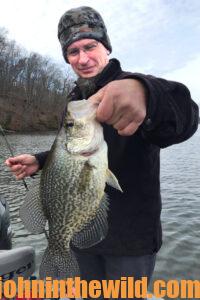 If I’m fishing highly-stained water, and can get close to a crappie without spooking it – within 15- 25 feet, I’ll be fishing my 11’ B’n’M Buck’s Graphite Jig Pole. When I’m using that pole, I like 15-pound-test braided line tied to a 15-pound-test fluorocarbon leader. I use the braided line and the larger-diameter fluorocarbon leader because that bigger line causes my jig to fall slower, allows the big crappie I’m trying to catch to see the jig from further away and to move in slowly as it falls and gives the fish time to decide if it wants to eat the jig. I usually try to keep that jig about 1-2 feet out in front of the crappie I’m attempting to catch. I want it to hit about 5 feet in front of the crappie, and then I’ll make a pendulum-like swing, so that the jig passes 2 feet above and in front of the crappie.
If I’m fishing highly-stained water, and can get close to a crappie without spooking it – within 15- 25 feet, I’ll be fishing my 11’ B’n’M Buck’s Graphite Jig Pole. When I’m using that pole, I like 15-pound-test braided line tied to a 15-pound-test fluorocarbon leader. I use the braided line and the larger-diameter fluorocarbon leader because that bigger line causes my jig to fall slower, allows the big crappie I’m trying to catch to see the jig from further away and to move in slowly as it falls and gives the fish time to decide if it wants to eat the jig. I usually try to keep that jig about 1-2 feet out in front of the crappie I’m attempting to catch. I want it to hit about 5 feet in front of the crappie, and then I’ll make a pendulum-like swing, so that the jig passes 2 feet above and in front of the crappie.
 To learn more about crappie fishing, check out John E. Phillips’ book, “Crappie – How to Catch Them Spring and Summer,” available in Kindle, print and Audible versions at http://amzn.to/WGaJLT. At this writing, some states are still having deer seasons which run through February 10th and others last even longer. To learn more about hunting for deer, check out John E. Phillips’ “Jim Crumley’s Secrets of Bowhunting Deer”, now available as of January 1, 2022 in Audible, as well as paperback and Kindle at https://www.amazon.com. You may have to copy and paste this link into your browser. (When you click on the books, notice on the left where Amazon says you can read and hear 10% of the book for free). On the right side of the page and below the offer for a free Audible trial, you can click on Buy the Audible book.
To learn more about crappie fishing, check out John E. Phillips’ book, “Crappie – How to Catch Them Spring and Summer,” available in Kindle, print and Audible versions at http://amzn.to/WGaJLT. At this writing, some states are still having deer seasons which run through February 10th and others last even longer. To learn more about hunting for deer, check out John E. Phillips’ “Jim Crumley’s Secrets of Bowhunting Deer”, now available as of January 1, 2022 in Audible, as well as paperback and Kindle at https://www.amazon.com. You may have to copy and paste this link into your browser. (When you click on the books, notice on the left where Amazon says you can read and hear 10% of the book for free). On the right side of the page and below the offer for a free Audible trial, you can click on Buy the Audible book.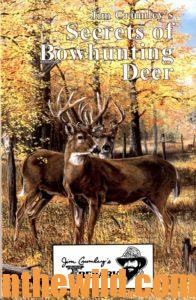
Tomorrow: How to Work a Jig for Crappie

